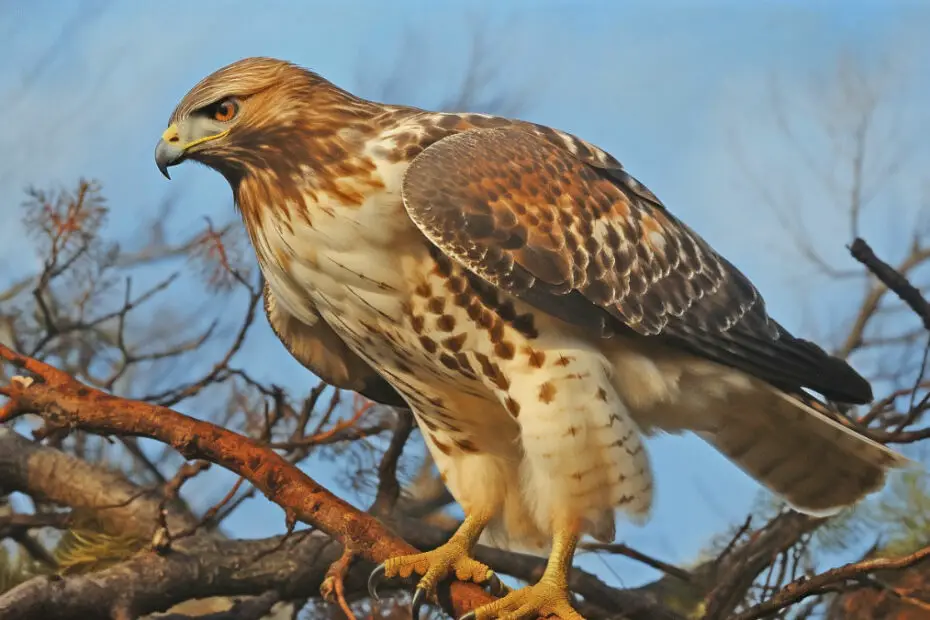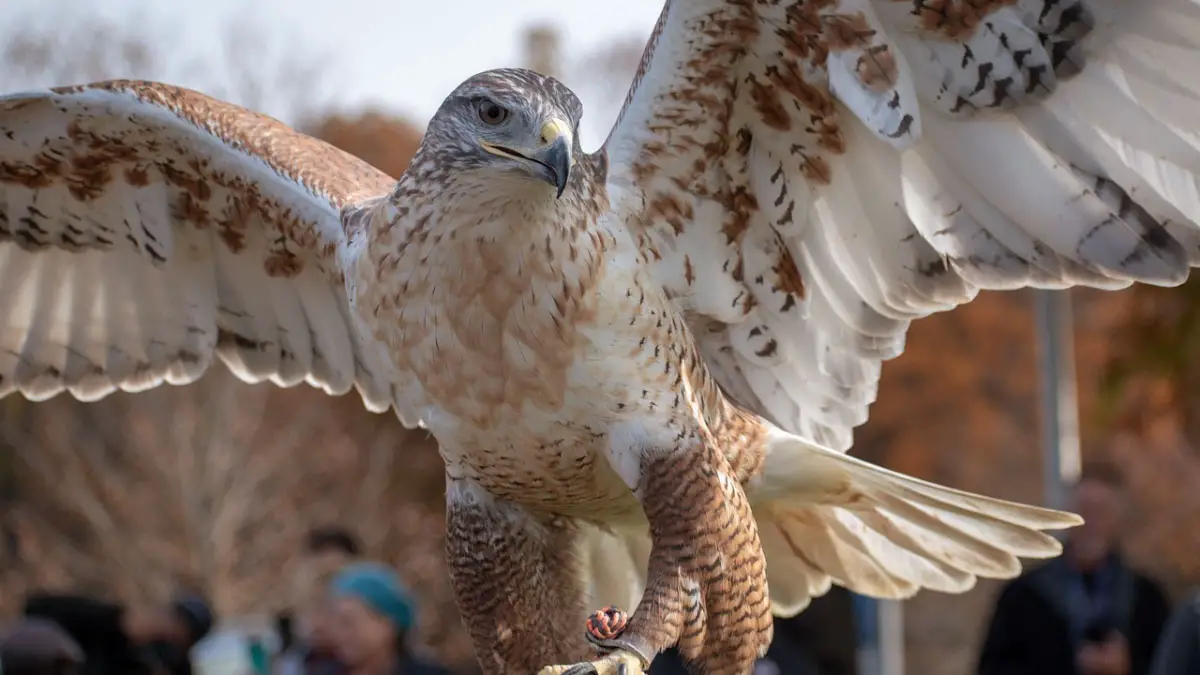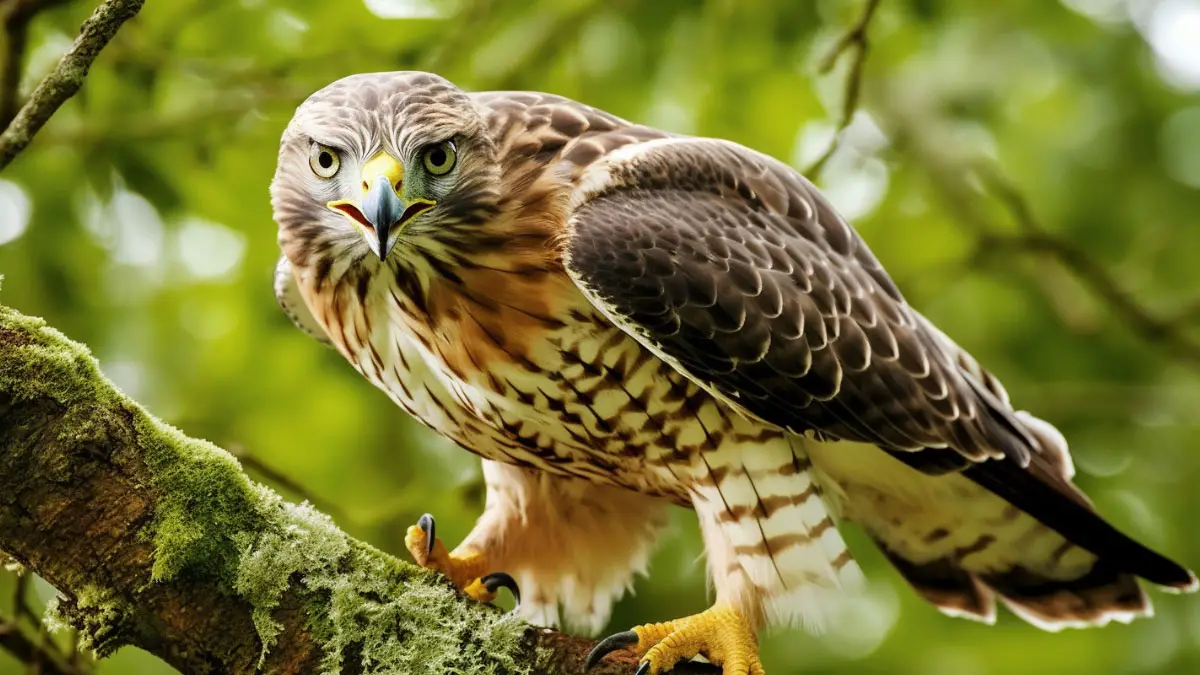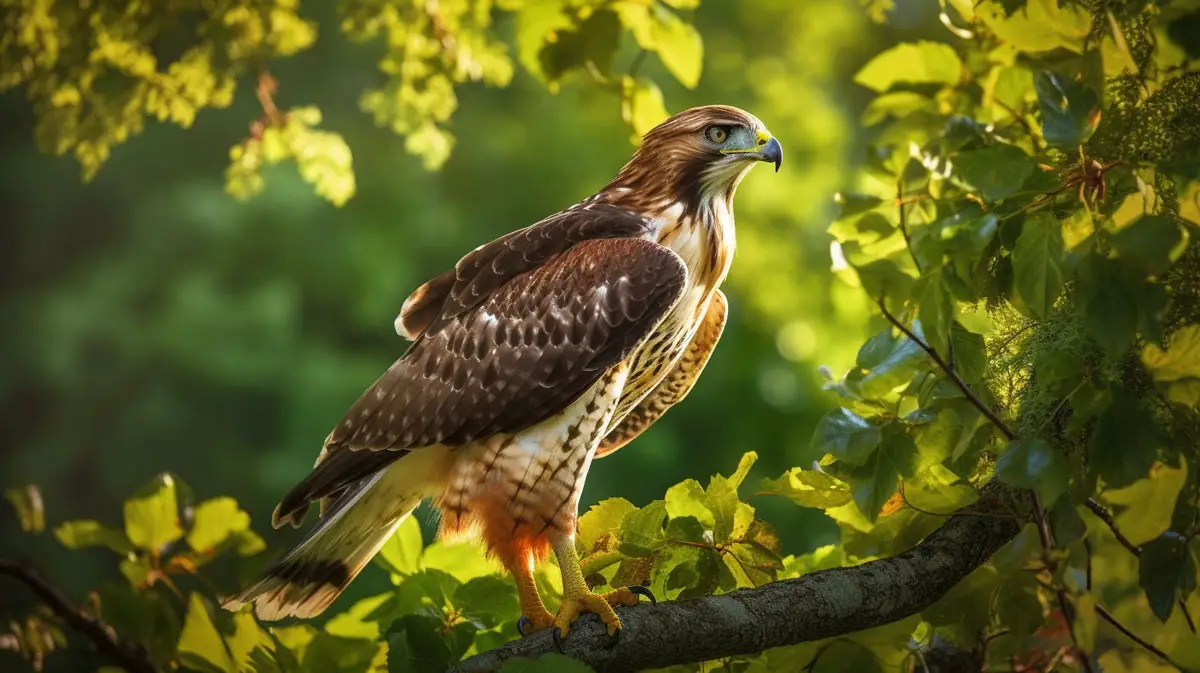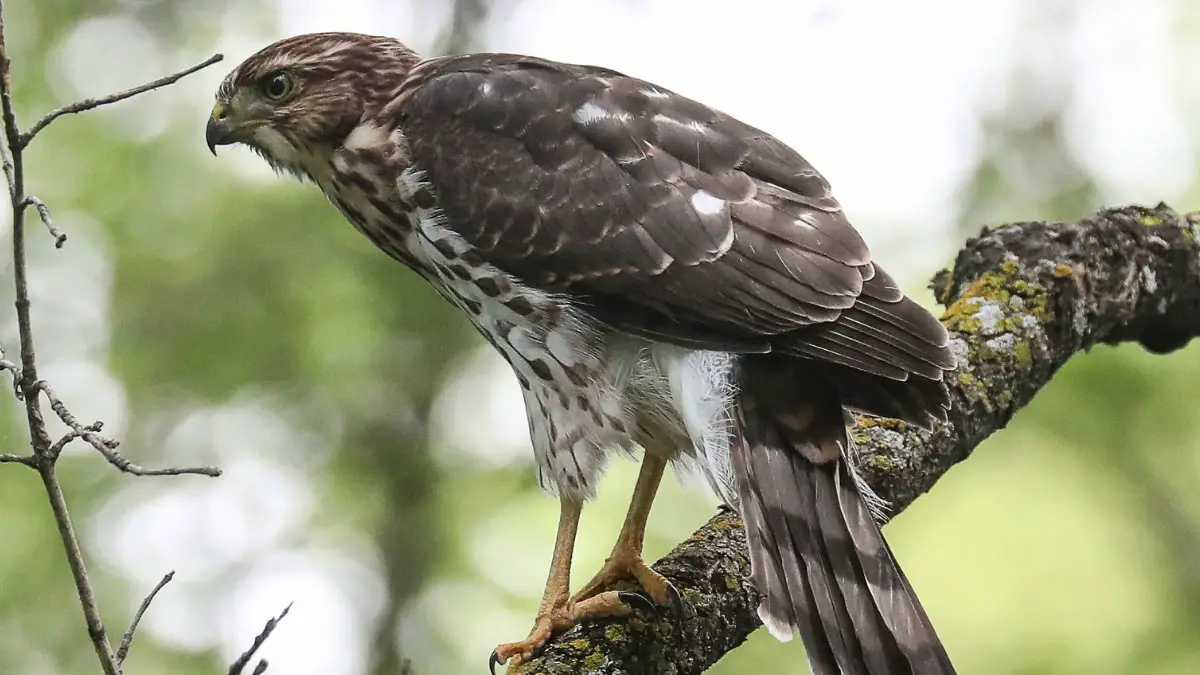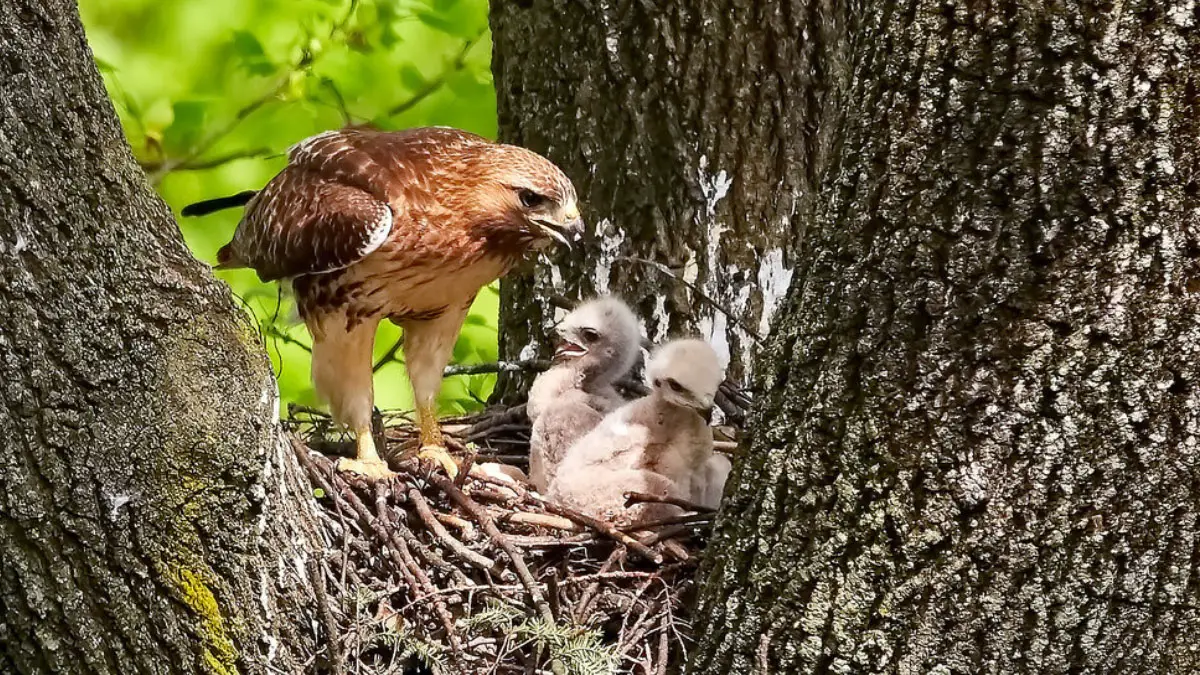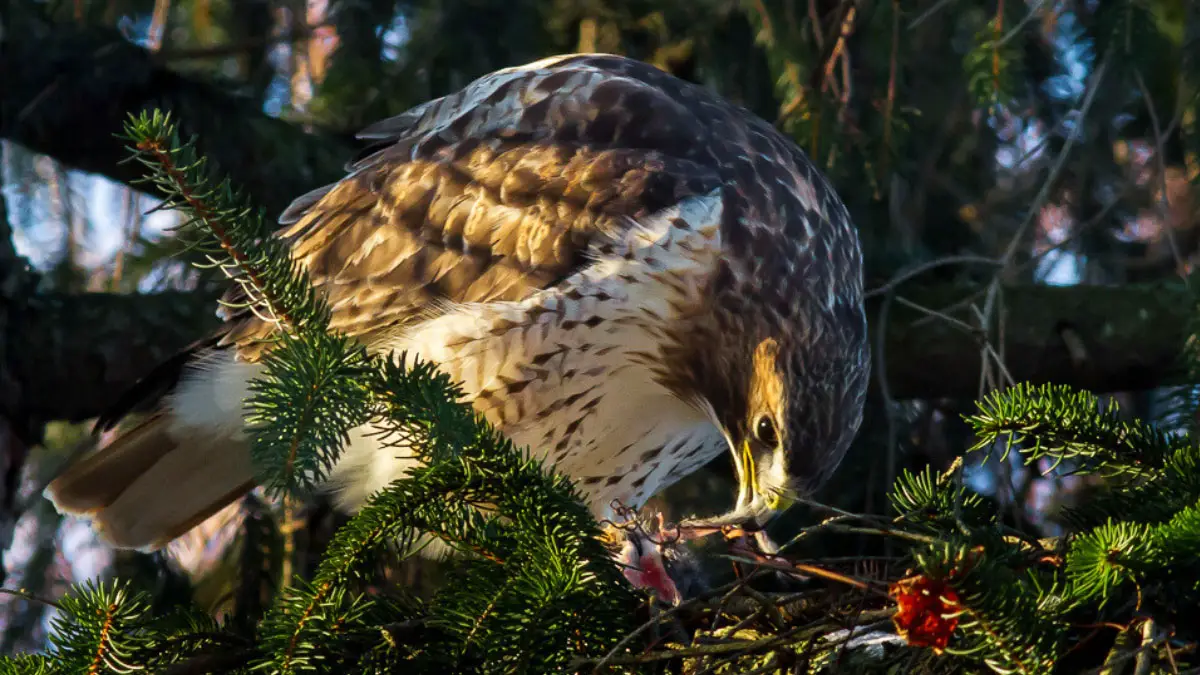Hawks are “ecological barometers” detecting ecosystem health. And they’re sensitive to environmental changes, including toxins, pollutants, and airborne threats to humans. Hawks are also known to play an important role in controlling pests like gophers, snakes, and moles. Well, to get all those benefits, you must know how to attract hawks to your backyard.
To attract hawks, provide enough water, shelter, and bird feeders as hunting grounds to prey on other birds. Plus, make sure your backyard has tall trees, as hawks perch on them to scan prey and support their weight. You should also offer bird baths for raptors so that they can cool off, which is another hook for them.
You might be thinking it’s easier said than done, right? Well, we’ll walk you through every step from the hawk’s habitat, food source, shelter, and a few useful tips. And most importantly, we’ll introduce the camera and lens to take marvelous snaps of hawks.
Understanding Hawks and Their Habitat Needs
Hawks are wild yet majestic and adaptable raptors. That’s why you need to have comprehensive knowledge of their needs and everything.
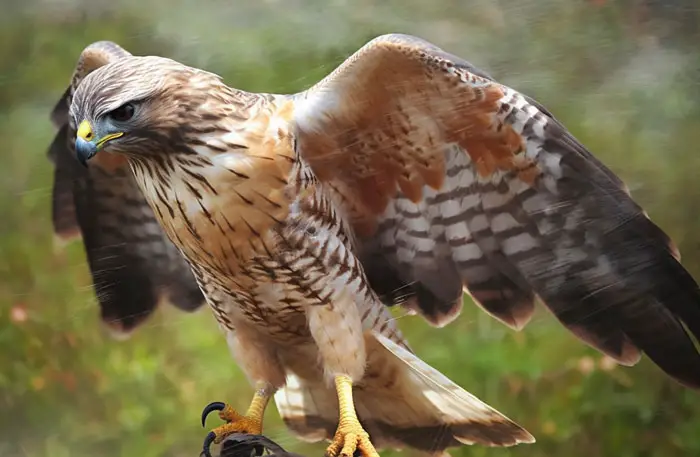
Types of Hawks that Can be Found in Backyard Habitats
There are more than 200 different kinds of hawks across the world; however, you might see a few types of backyard hawks.
Cooper’s Hawks
These are often confused with Sharp-shinned Hawks but are larger and hunt small birds. With a stealthy hunting technique, they hang out on the edges of forests and might visit your bird feeder in the backyard.
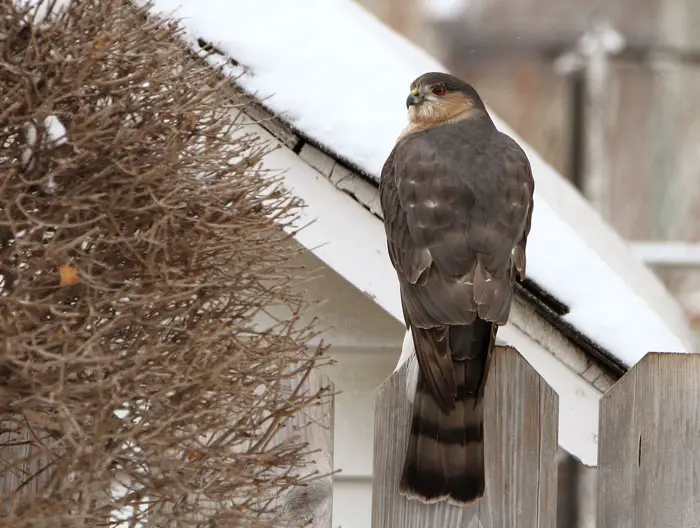
Buteos
Buteos are well-known raptors that hunt while hovering over wide-open spaces. They’re often large, magnificent hawks with short tails that frequent suburban and urban regions. They can be discovered in backyard gardens, though.
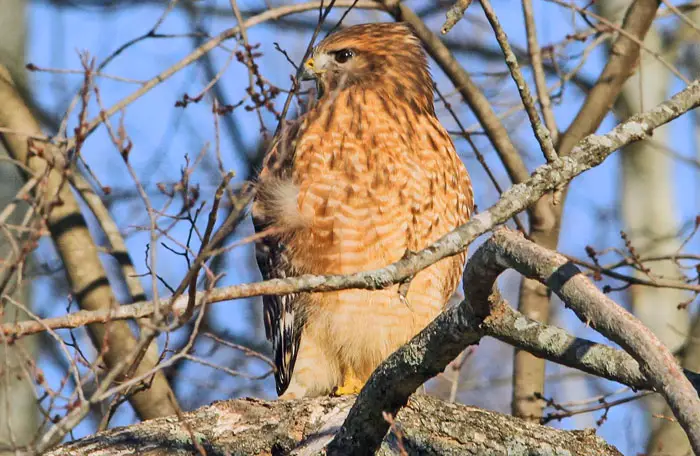
Sharp-shinned
These stunning birds feature blue-gray feathers, cream-colored chests, reddish-orange stripes, and black tail bands. They are well-known for stopping by backyard bird feeders and hunting the songbirds that flock there.
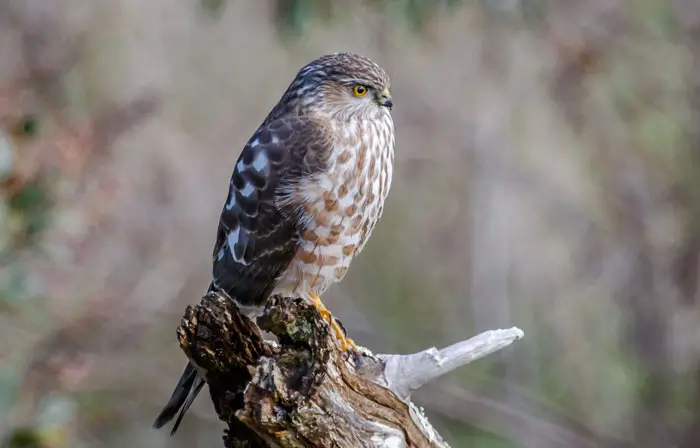
Red-shouldered
Red-shouldered likes to live in woods with large canopies because it makes hunting simpler. These raptors can also be seen in suburbs where homes and woods coexist. During the winter, you could see them in your backyard trying to hunt squirrels.
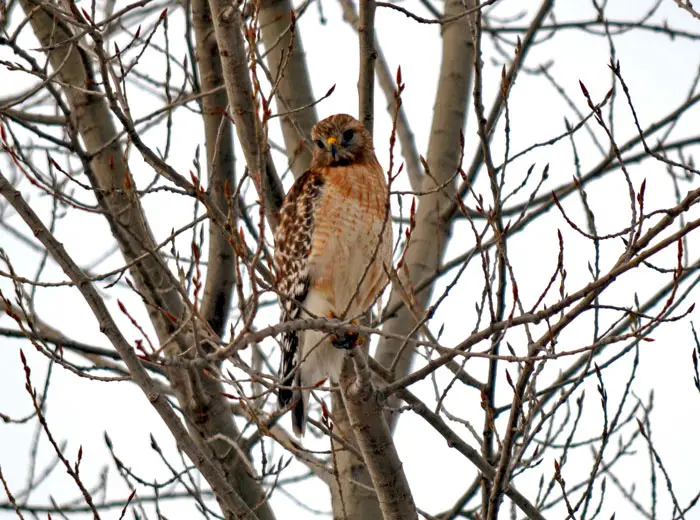
Explanation of Hawk Habitat Needs
When we talk about how to attract hawks to your backyard, it’s vital to know their habitats. Otherwise, you can’t create a suitable surrounding for them.
Food
To attract backyard hawks, it’s best to provide natural food sources like smaller birds, insects, and rodents. Hawks and bird feeders have a great correlation. Feeders attract birds, and where birds gather, hawks might come in for a quick meal.
And as a bird watching enthusiast, you must ensure that potential prey sources are available. However, you shouldn’t deliberately feed hawks with raw meat or pet mice.
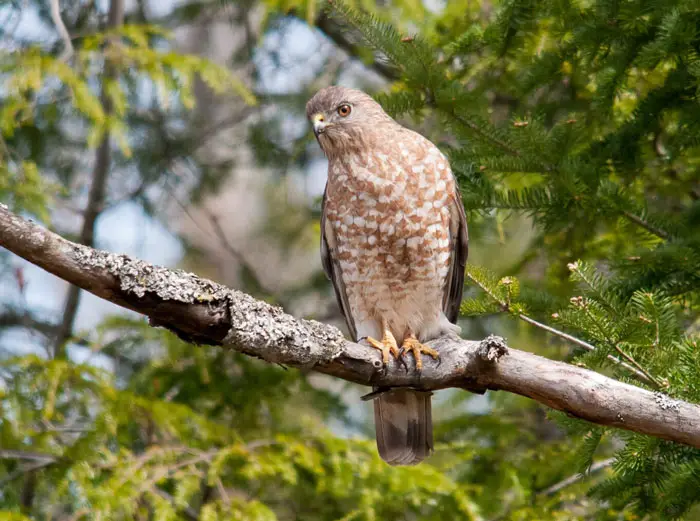
Water
Most raptors don’t drink water because they get enough fluid from their prey’s blood. However, they love cooling off and cleaning their feathers in bird baths, especially over the hot summer months. You can install a bird bath that’s deeper or larger, or even ground-level ones for fetching in hawks.
Shelter
They like tall and robust perches for picking out prey and shaded spots for digesting after meals. Dead trees, as well as huge trees with limbs for perching, are ideal possibilities. Hawks are also known to perch atop rooftops, fences, and sheds.
Nesting
When it comes to bird nesting, hawks like to use the same large trees they use for perching and cover. They like robust branches that can withstand the weight of bigger nests.
Discussion of the Natural Environment and Ecosystem Considerations
These majestic creatures like hawks, even falcons, eagles, and vultures call the sky above the tree canopy their home. They also nest in high trees, using their height to keep an eye on their surroundings and potential prey.
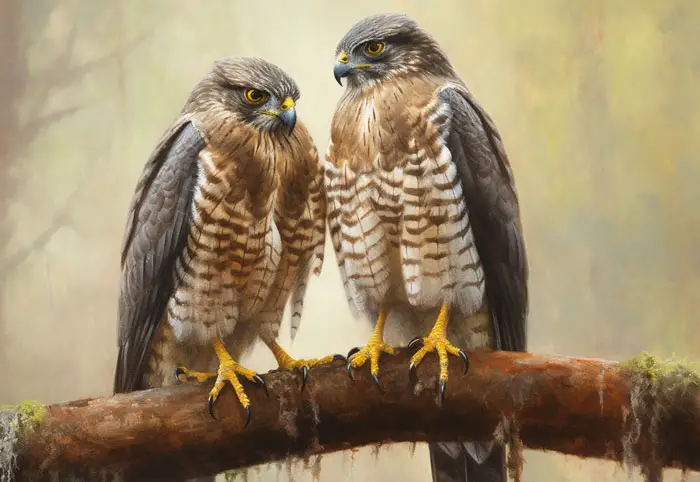
The Red-tailed hawk, for instance, prefers tall trees on the edge of woodlands or open areas. But in treeless regions, they nest on rocky cliffs, cacti, or shrubs.
Tips for Creating A Suitable Backyard Habitat for Hawks
Creating a suitable backyard habitat for hawks is easy if you know what they need. And you can do that by providing places for resting and roosting.
In that case, big trees with sturdy branches are perfect. They provide an ideal spot for hawks to take a break after a hunt or to look for prey from a high vantage point. Though hawks can lounge on your wall or roof, they favor unwinding and scouting in trees.
Providing Food for Backyard Hawks
You don’t want to keep visitors in your backyard hungry, do you? That’s why we’ll break down the eating patterns of hawks for you.
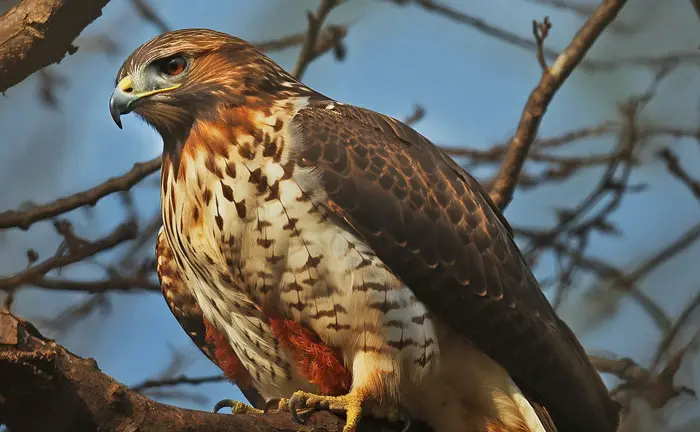
Discussion of hawk feeding behavior and preferences
Hawks are fascinating birds having diverse feeding behavior. As top predators, they have a significant impact on the ecosystems they inhabit.
Their prey may include small mammals, insects, reptiles, and even other birds. This variety in their diet allows them to adapt to changes in their environment and find food sources that are most abundant.
Now, you must understand what hawks eat for creating a hawk-friendly backyard habitat. Thus, you can ensure their continued survival in our natural world.
Overview of Food Sources for Hawks
Well, Hawks are adaptable birds that can live in various habitats with different climates. Thus, their food sources depend on what’s available in their environment.
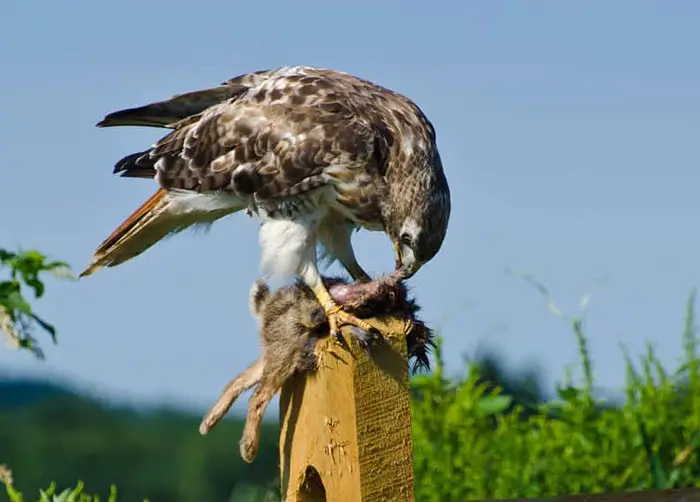
The most common food sources of hawks are —
- Rats
- Mice
- Rabbits
- Squirrels
- Prairie Dogs
- Gophers
- Voles
- Bird Eggs
- Snakes
- Chipmunks
- Frogs
- Lizards
- Salamanders
- Turtles
- Various insects
Explanation of How Bird Feeders Can Attract Hawks, Including Best Types of Feeders to Use
To attract hawks to your backyard, you’ll need to create an environment that’s attractive to small bird species. Because they’re the primary food source for raptors, so by attracting them, you’ll be drawing hawks.
You can do this by setting up bird feeders with lots of bird seeds to attract sparrows, finches, doves, and thrushes. The more visitors you have, the more likely a hawk will visit your yard to hunt for prey.
Aside from bird seed, you can provide other food sources, such as rodents and insects but avoid intentionally baiting them. If you’re fence-sitting on bird feeder types, you must avoid enclosed feeders. Instead, it’d be best to use a platform or tray-style feeder, allowing the birds to perch and feed openly.
Cautions and Safety Tips for Providing Food for Backyard Hawks
Feeding backyard hawks can be exciting for bird enthusiasts, especially for those who enjoy wildlife photography. But you need to be careful and follow some safety tips to keep everyone healthy and safe.
Get yourself familiar with the local laws and regulations to ensure that it’s okay to feed hawks. If it’s okay, you’ll then need to make sure that you’re providing the right type of food, like small mammals, birds, and insects that hawks would normally eat.
However, don’t overfeed them, as this can lead to dependency on handouts and disrupt hawk behavior patterns. On top of that, maintain a safe distance from hawks while they’re feeding to avoid causing any stress or disturbance.
Water for Backyard Hawks
If you want to make the best backyard habitats for hawks, you must have water arrangements. You’ll know why it’s important from our discussion.
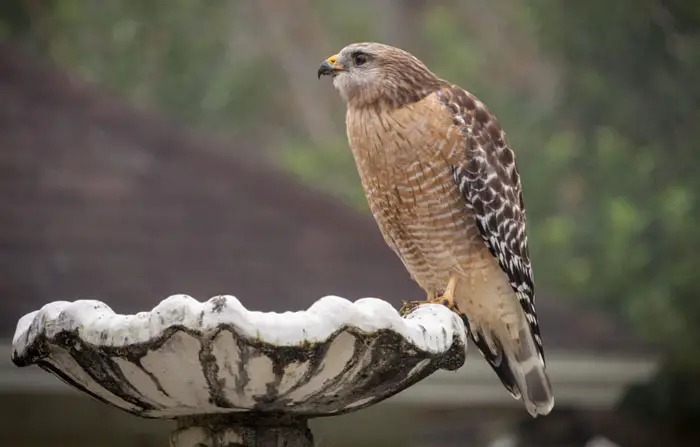
Explanation of the Importance of Water for Hawks
Hawks are like other birds of prey, so they get the liquids they need from their prey. However, all birds, including hawks, require a consistent source of clean water to survive.
This includes drinking and bathing water to keep their feathers in good condition for flight. Feathers are essential for insulation and flight, making them a vital part of being a bird.
Overview of Water Sources for Hawks, Including Bird Baths and Other Options
Since we’re talking about how to provide water for backyard hawks, shallow dishes are great. Just be careful that the water isn’t too deep; else, birds might find it hard to get it.
Put a few flat river stones on a single side of a birdbath to fix that. Keep the water fresh and clean while keeping it in a place where hawks can readily get it.
Best Types of Bird Baths for Hawks
- When it comes to different bird bath types is the sand-coated heated birdbath. It not just looks great, but it also provides a rough surface for birds to hold with their claws.
- Another alternative is a ground-based bird bath, which is put close to the ground to suit the drinking preferences of many bird species. The Raptors may never have too many choices, but both of these are good.
Tips for Keeping Bird Baths Clean and Safe for Hawks
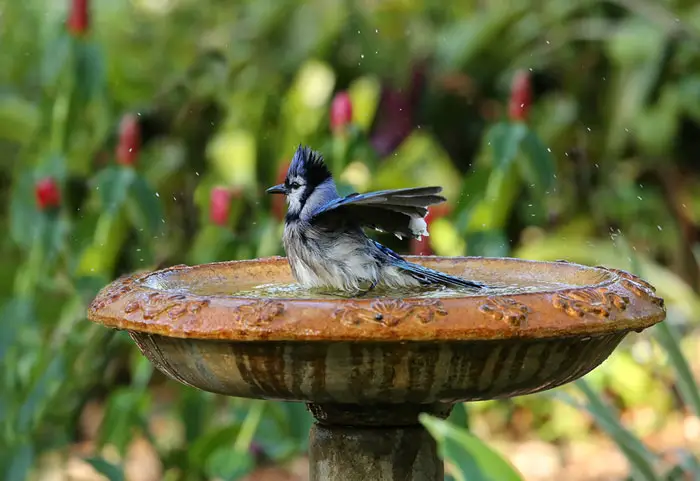
When you get your birdbath set up, you need to care for it so that your hawk friends will return.
- Replace your water regularly, particularly if the bath is used often, to keep it from getting dirty and stale.
- To keep it clean, scrub it off with water and soap using a vigorous brush.
- Place it in an open area, enclosed by plants and preferably in the shadow. This will protect wildlife from heat and predators while also attracting other bird species.
Providing Shelter and Nesting Options for Hawks
You must have a well-planned backyard habitat design to draw in hawks, including shelter and nesting.
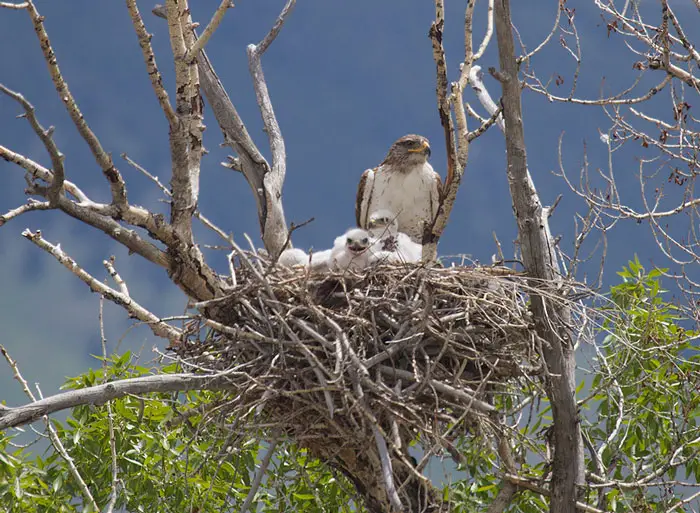
Overview of Hawk Shelter and Nesting Needs
Hawks need shelter and nesting sites with tall trees, open spaces, and good visibility. They prefer strong, stable, and wide branches to support them. Besides, you can also provide a variety of larger nesting materials like branches and twigs for resident raptors.
Explanation of How to Provide Suitable Nesting Sites for Hawks, Including Nest Boxes and Natural Nesting Sites
- Try to find natural spots like tall trees or rocky cliffs where hawks typically nest.
- Consider setting up a nest box if you don’t have natural options available.
- These should be large enough for the hawk and placed in an open area away from human activity.
- Don’t forget to clean the box regularly to prevent it from becoming dirty or infested with parasites.
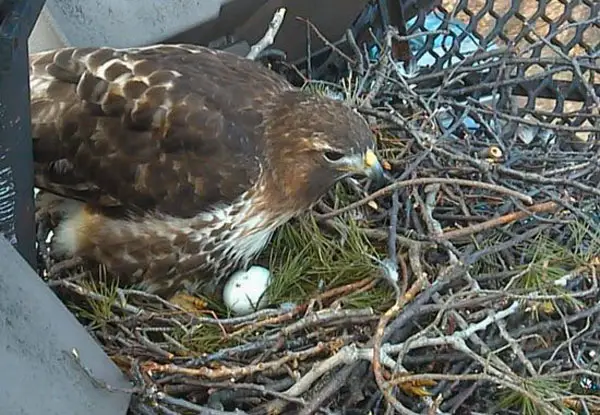
Cautions and Safety Tips for Providing Shelter and Nesting Options for Backyard Hawks
- When you’re offering shelter and nesting options for backyard hawks, don’t forget to keep it safe for everyone.
- Keep your distance and don’t mess with their nesting activities.
- Always use safe materials that won’t harm the birds.
- On top of that, watch out for power lines, insecticides, and chemicals that can be dangerous for their backyard habitats.
Attracting Hawks for Bird Watching and Photography
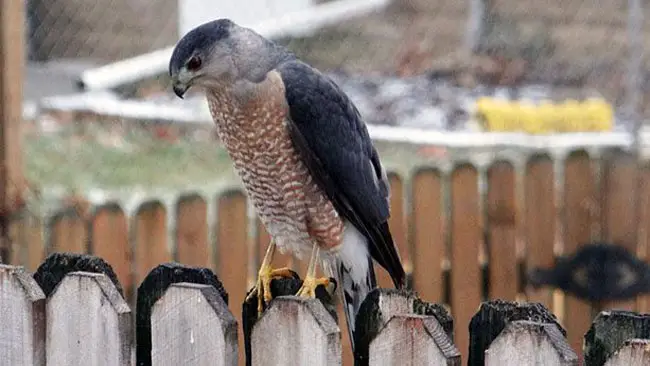
Let’s now talk about the times for hawk sightings and some safety and photography tips.
Discussion of the Best Times and Seasons for Hawk Watching and Photography
Hawks are best seen during their migratory seasons, which are normally from March to May and September until mid-November.
And Hawks may fly at various times of the day according to their species, season, and geographic location. For instance, during prime bird migration, Cooper’s Hawks and Sharp-shinned take to the skies at the first hint of daybreak.
You can expect hawk sightings most frequently from 8 am to 5 pm. On windy days, you can do hawk sightings all day. But on hot days, thermals are stronger at midday, causing hawks to fly higher and further from lookouts.
Tips for Observing Hawks Safely and Responsibly
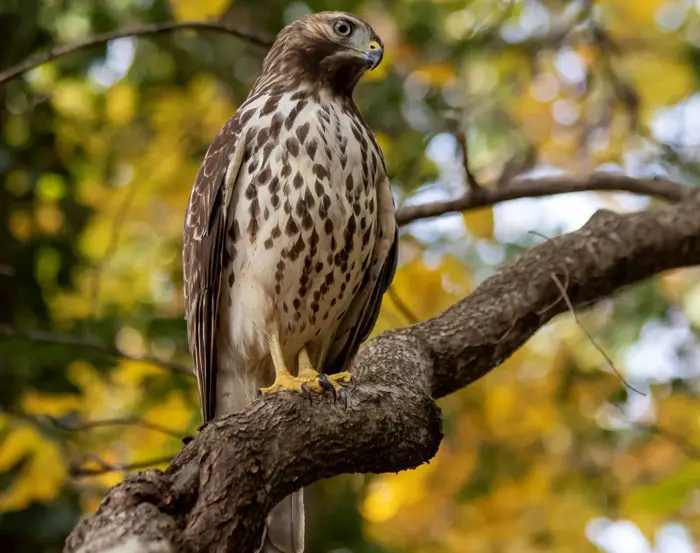
If you’re interested in observing hawks, there are a few important tips for attracting hawks for birdwatching and photography while remaining secure.
- Just maintain a safe distance though they don’t fly so close
- Avoid disturbing them intentionally or even unintentionally
- Remember that hawks are wild animals, and observing them should always be done with care and respect
Explanation of Ethical Considerations for Observing and Photographing Hawks
When observing hawks, it’s important to consider bird watching ethics. Before you begin to observe or photograph any bird, including hawks, make sure that you’re not causing them harm.
It’d be best if you do prior research on hawk behavior and the species to better understand the answer. And to ensure ethical observations, clean up the bird feeding stations and stock them up only with appropriate food items for hawks.
Most importantly, never use bait to attract birds, as this might alter predator-prey relationships in detrimental ways.
Best Camera and Lens Options for Capturing Hawk Photos
When it comes to capturing hawk photos, the best camera and lens options will depend on various factors such as lighting conditions, camera type, and distance between you and the hawks.
In recent times, DSLR and mirrorless cameras have been gaining popularity and the Canon R5 is top-of-class. For the lens, the Sigma 150-600mm F5-6.3 DG OS HSM is a fantastic option that works well in bird and wildlife photography.
In addition to the equipment, mastering bird photography techniques, such as using appropriate camera settings are crucial for capturing stunning hawk photos.
FAQs
Still, you might have some queries, which we’ll answer below. Check them out.
Yes. Hawks stay in the same area for years and use the same nest for raising young. They only move due to loss of habitat, lack of food, or the presence of predators, including humans.
The greatest times to see hawks are when they’re migrating in the spring and fall. However, there are more hawks migrating in the fall than in the spring.
For optimal hawk watching, aim for late morning to early afternoon, although hawks can be seen throughout the day. Lower and closer views are typically earlier and later in the day.
Final Words
While wrapping up how to attract hawks to your backyard, we insist you consider a few things to make the surroundings more appealing. Planting trees and shrubs that provide good perching and nesting spots is a great start.
Hawks also need a steady supply of prey, so setting up a bird feeder can bring in smaller birds, which in turn attract hawks. When you have successfully attracted hawks to your backyard, use a camera with a long telephoto lens to capture their beauty.
